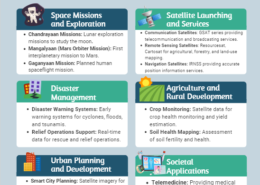During the Bhopal gas tragedy, immediate disaster management steps included the establishment of a crisis management group and the initiation of evacuation procedures for affected populations. Medical teams were mobilized to treat gas exposure victims, and emergency shelters were set up. However, thRead more
During the Bhopal gas tragedy, immediate disaster management steps included the establishment of a crisis management group and the initiation of evacuation procedures for affected populations. Medical teams were mobilized to treat gas exposure victims, and emergency shelters were set up. However, the response was hampered by inadequate preparedness and coordination.
The environmental impact of the tragedy was severe. The release of methyl isocyanate (MIC) caused extensive contamination of soil and groundwater, leading to long-term health hazards for the local population. Ecosystems were disrupted, with significant harm to flora and fauna. The tragedy underscored the need for stringent safety measures and improved disaster response protocols to prevent and mitigate such catastrophic events.
See less


Absolutely, it's a bit like choosing between a quick fix and a long-term game plan in disaster management. Imagine if you had to choose between fixing a leaky roof right now or investing in a top-notch roofing system that could prevent future leaks. Sure, fixing the leak will save you from a soggy lRead more
Absolutely, it’s a bit like choosing between a quick fix and a long-term game plan in disaster management. Imagine if you had to choose between fixing a leaky roof right now or investing in a top-notch roofing system that could prevent future leaks. Sure, fixing the leak will save you from a soggy living room today, but investing in a great roof means you won’t have to worry about more leaks down the road.i
Similarly, while immediate relief is crucial for addressing the pressing needs of affected communities, investing in disaster preparedness and mitigation is like building that strong roof. It helps to prevent future disasters from causing such havoc, saving lives, and reducing recovery costs. So, while it’s essential to deal with the urgent needs, putting resources into prevention and readiness creates a safer, more resilient future for everyone.
See less